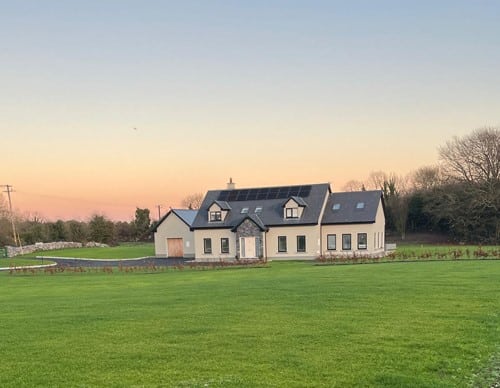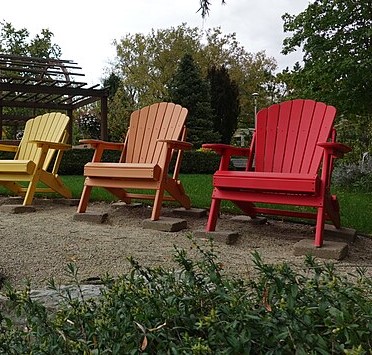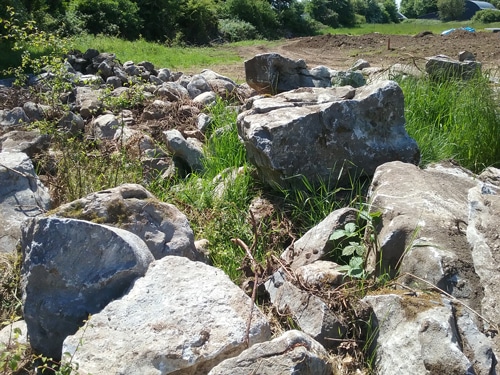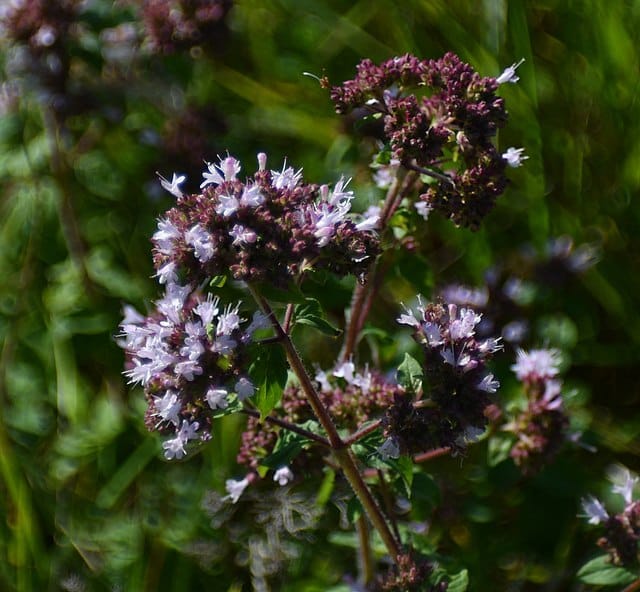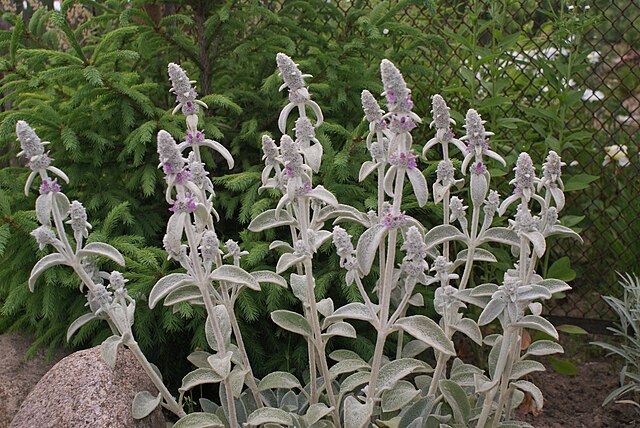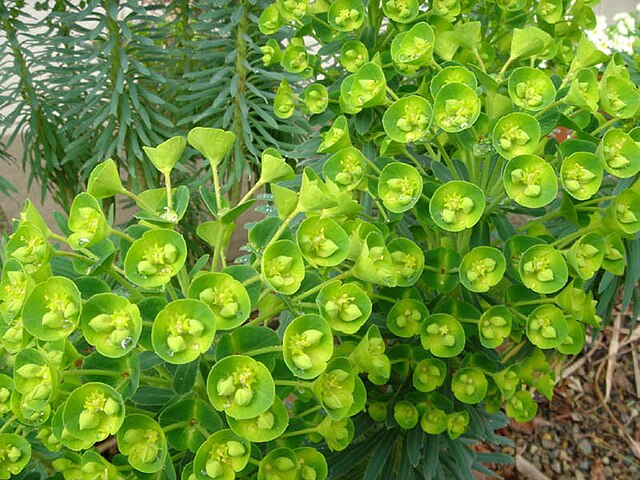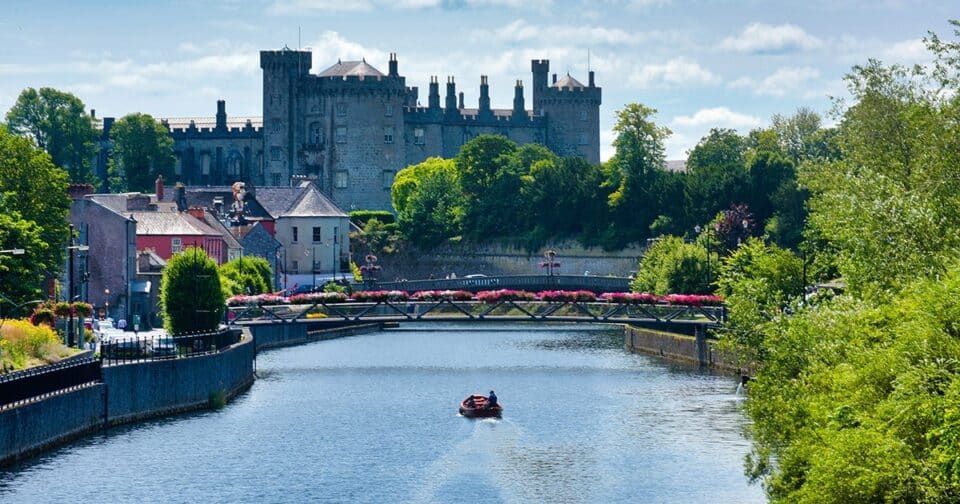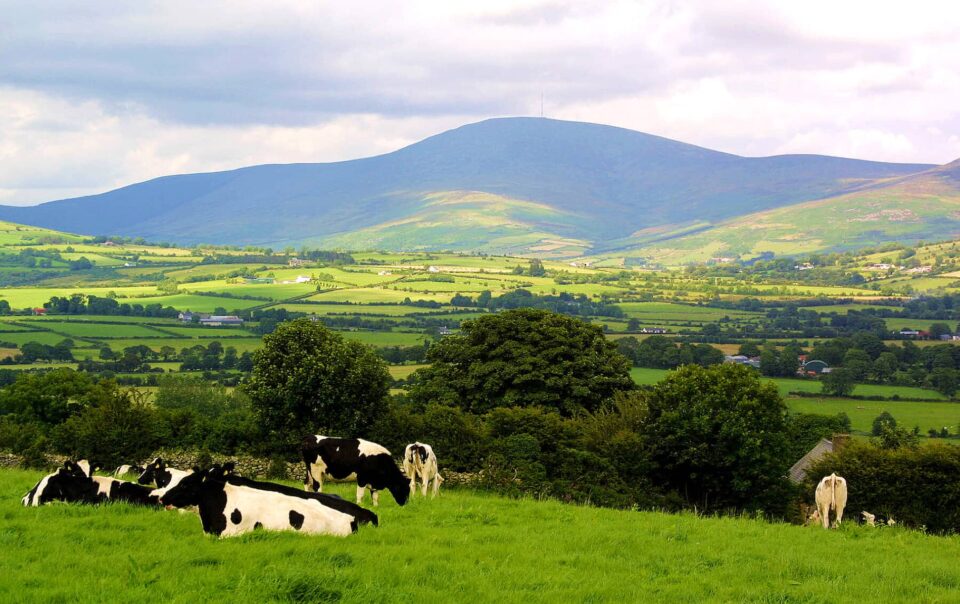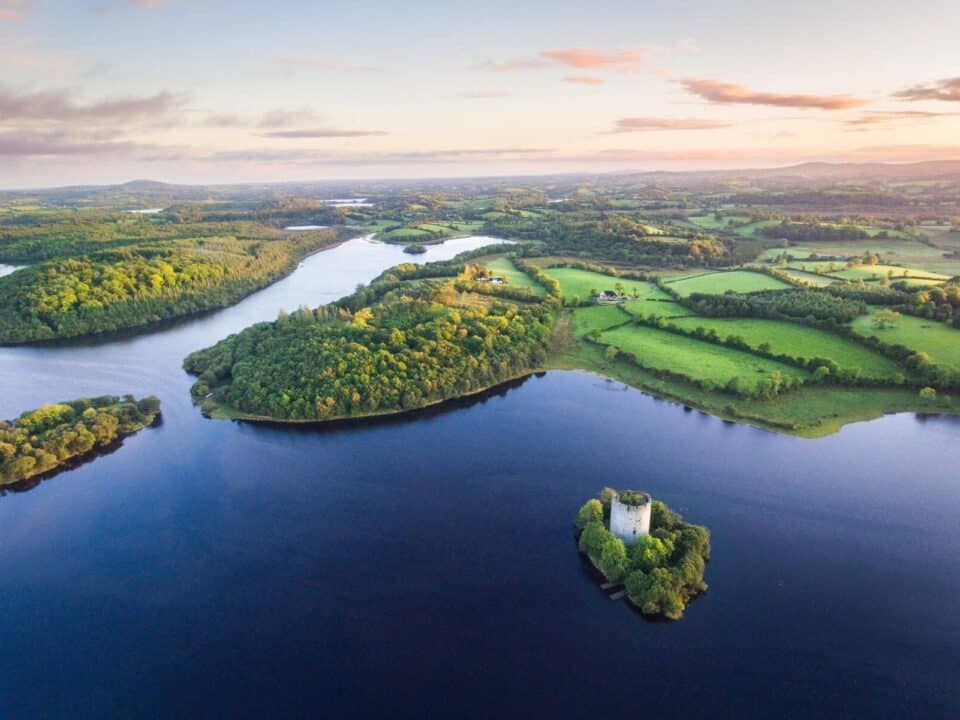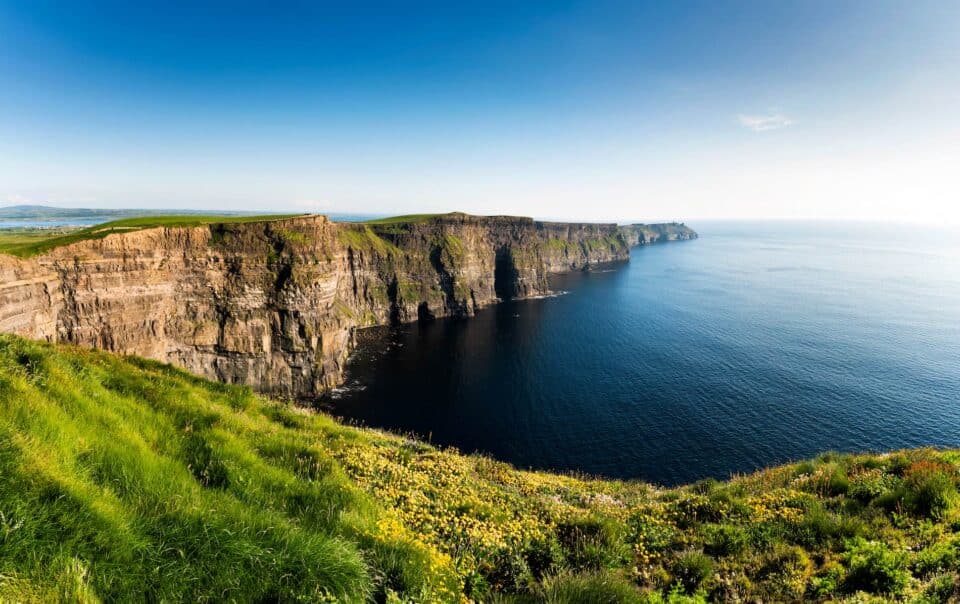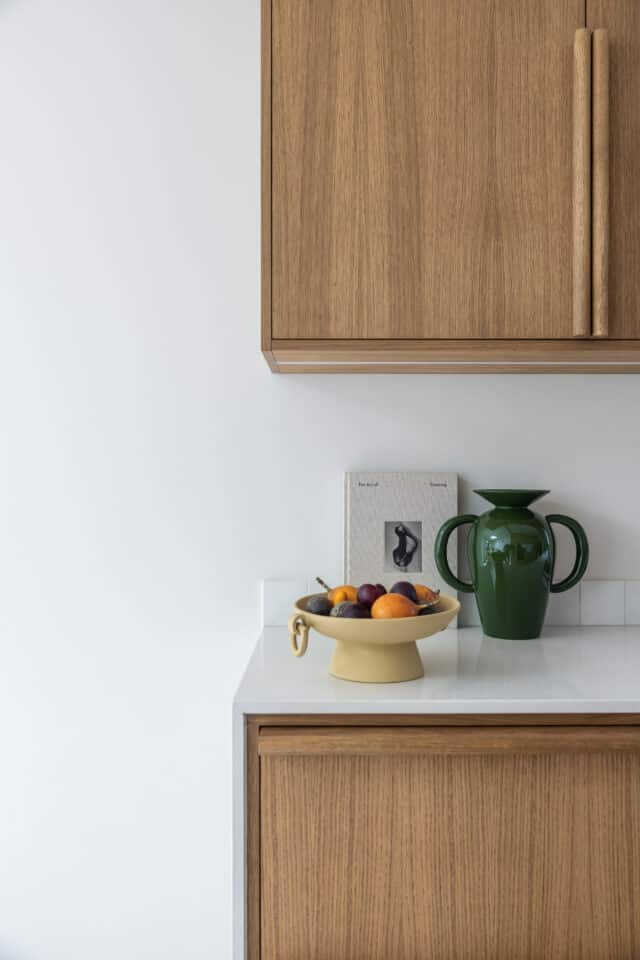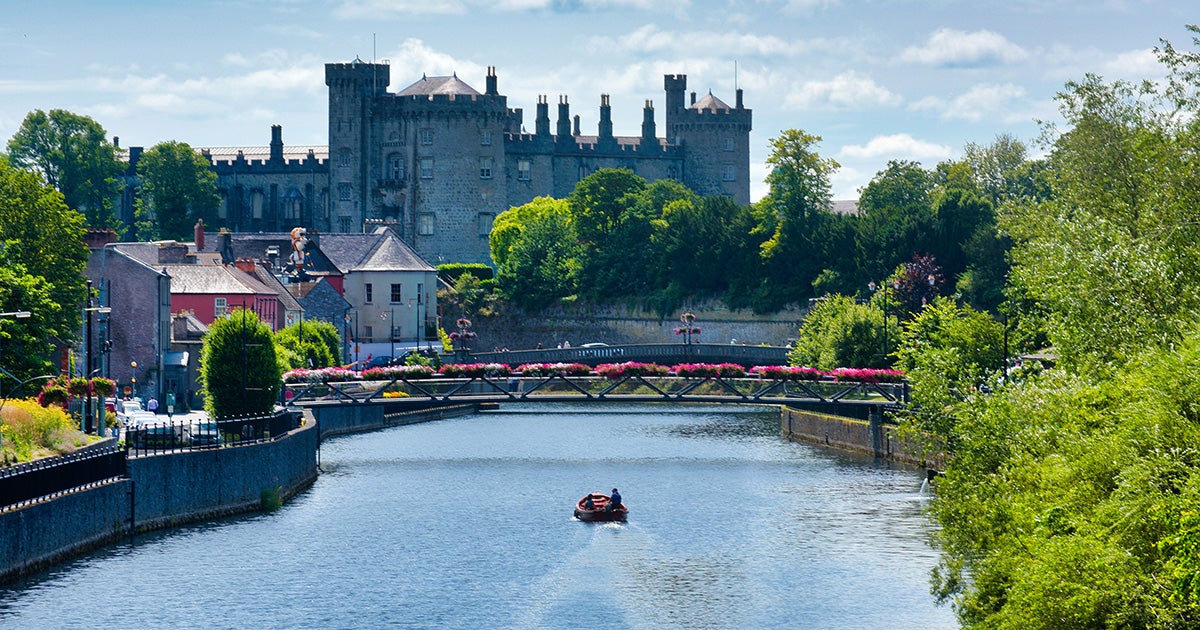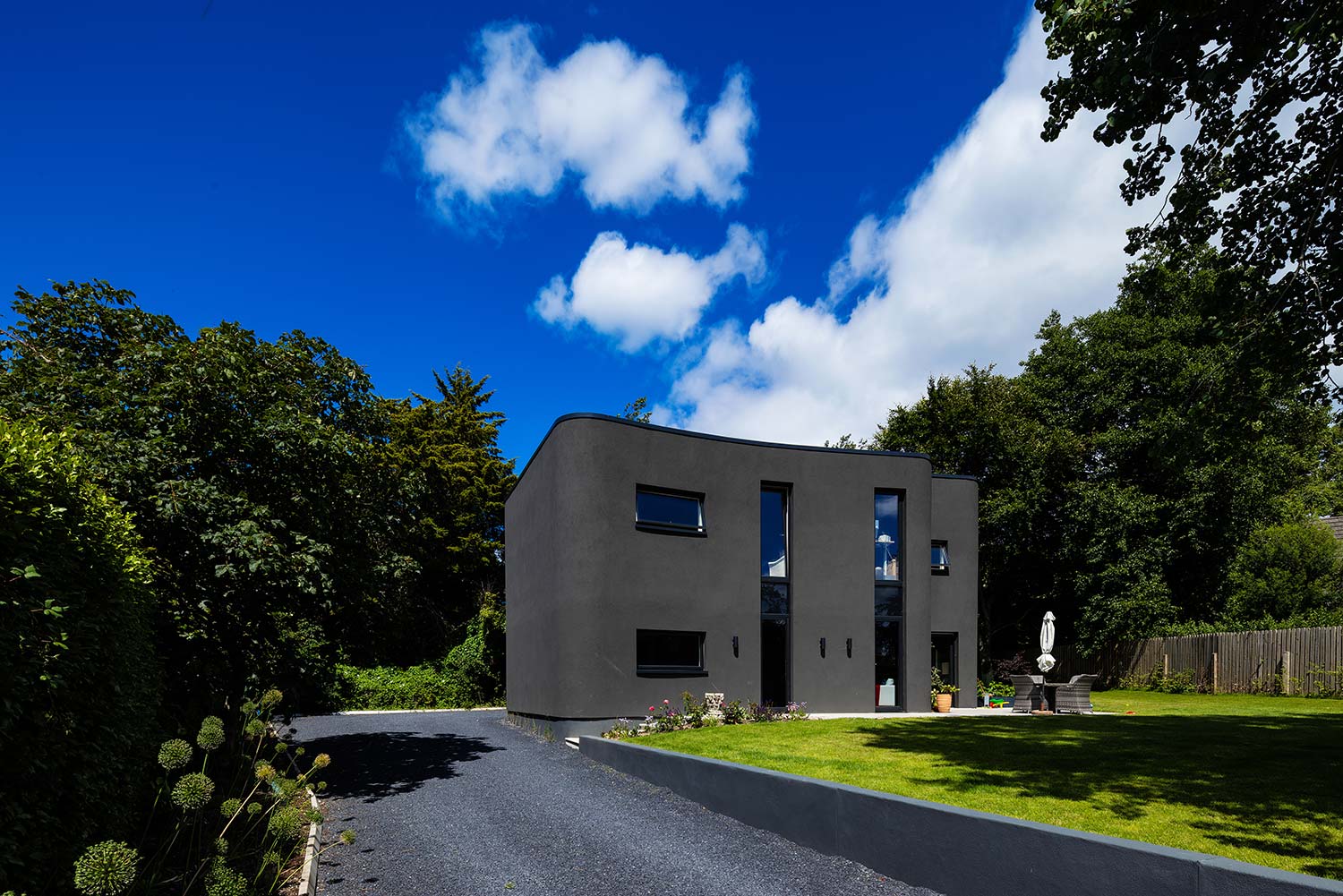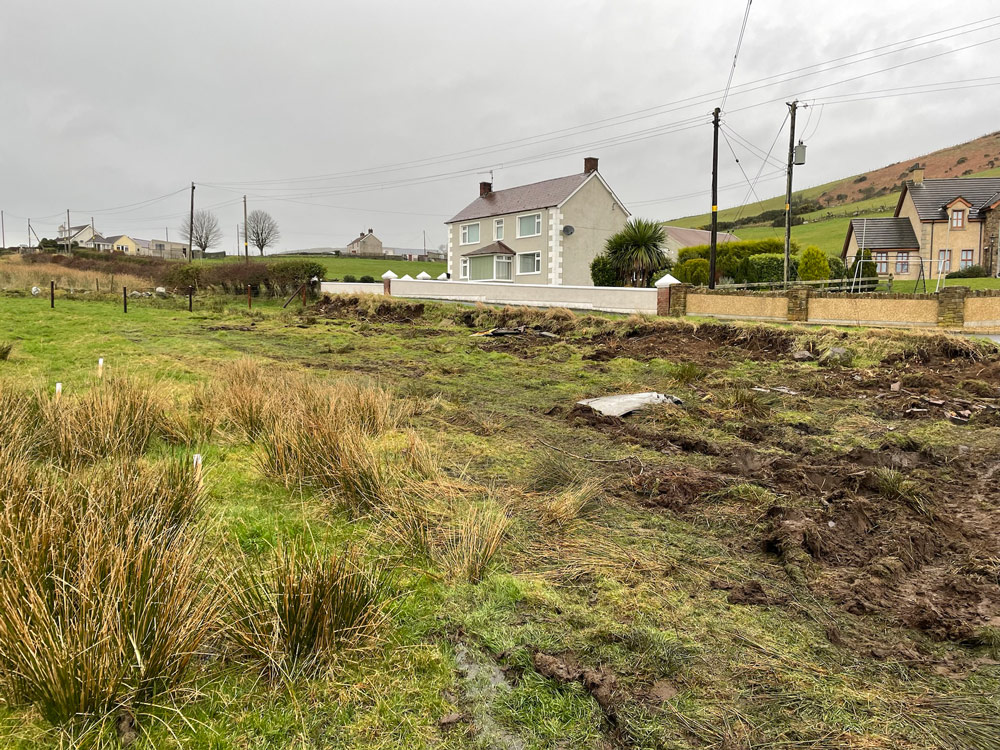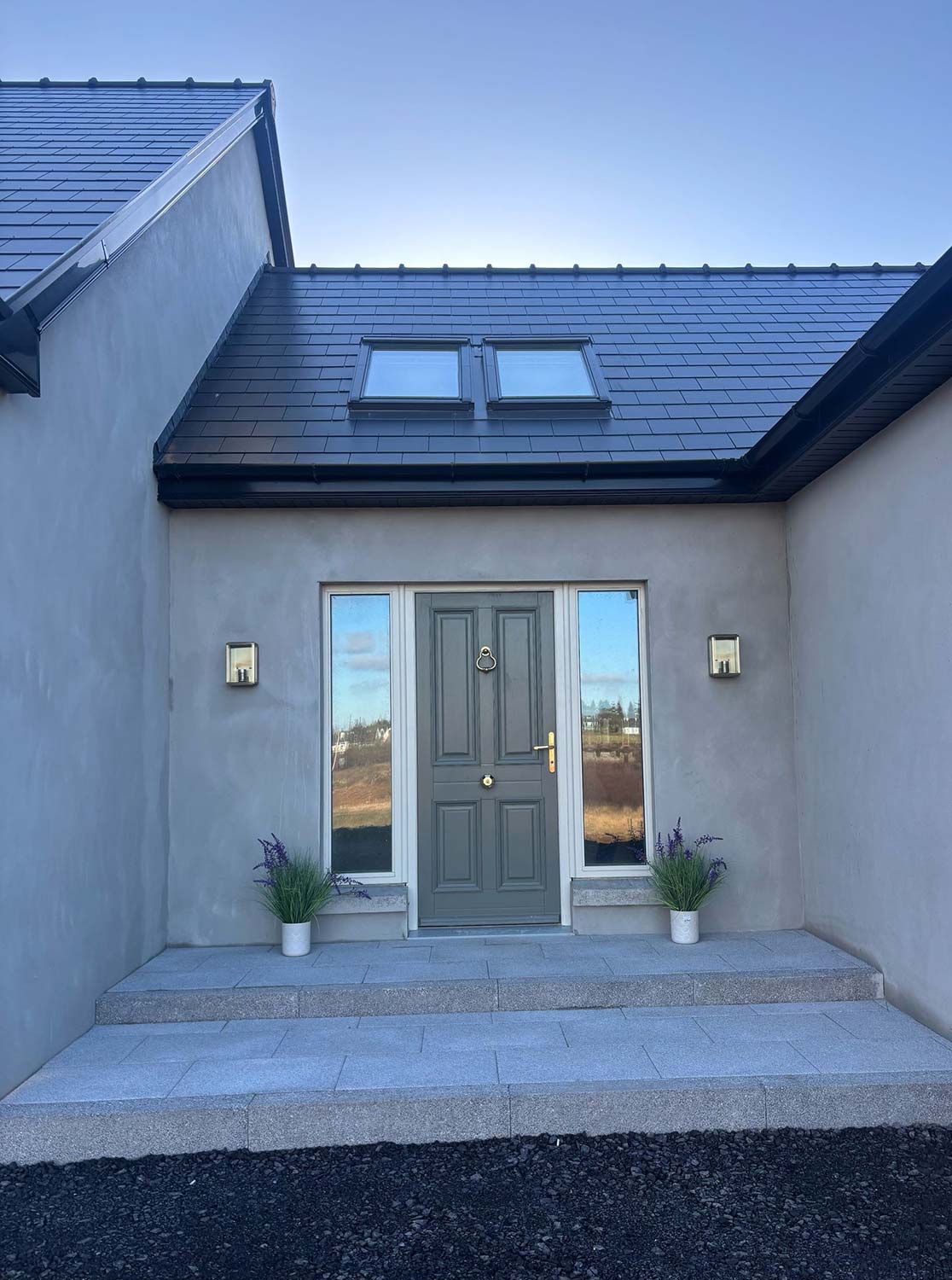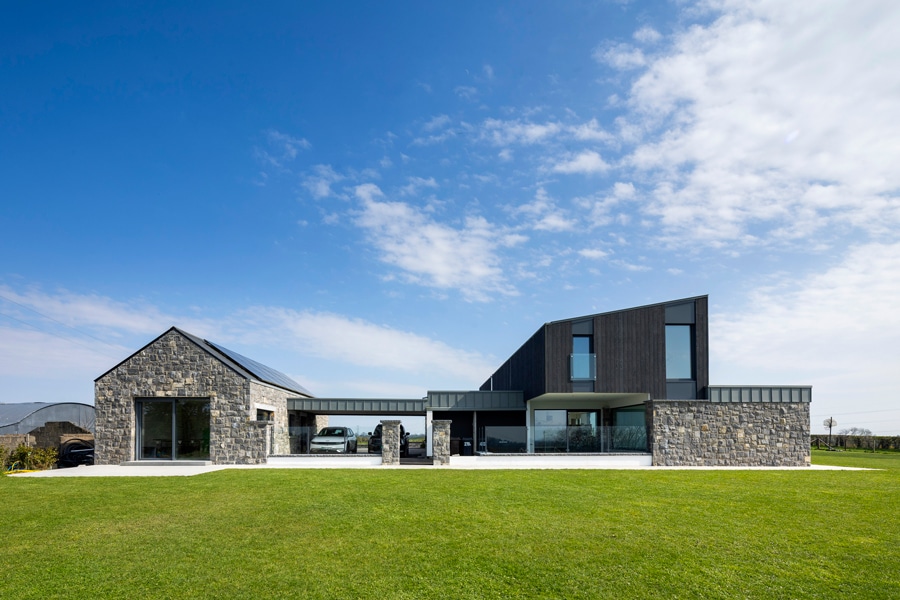In this article we cover:
- A garden project in Co Galway
- How the garden was divided up
- Planting choices for rocky and free draining sites
- Top tips for rocky gardens
- Garden plans
When a new home has a very extensive outdoor space, it can feel overwhelming to turn it into a functional, manageable family garden. You need to be able to think on a fairly large scale, and in practical terms, while paying attention to detail and making sure the home and garden sit well together.
Divide and conquer
It makes sense to divide a large garden into several areas. This can make the scale feel more human and make the space feel more inviting. In this case, the homeowners needed plenty of lawn for playing, seating areas, a kitchen garden and different kinds of trees. The design is broken up as follows:
Driveway: A long driveway connects the front gate with the house itself, so flowering cherry trees will be used to create an avenue of blossom and autumn leaf colour alongside.
Shelterbelts: Native willow, alder and silver birch will be planted closely together in strategic spots to help form shelterbelts and provide respite from strong westerly winds.
Wildflower meadow: An extensive area will be given over to a meadow of native Irish wildflowers, with a mown grass path leading through the meadow to a rustic seat. Not only will this reduce the amount of lawn mowing, it will also provide a much-needed habitat and larder for birds and insects of all kinds, whose presence in the garden will contribute to a healthier ecosystem and strong, healthy plants.
Lawn areas: In one of the lawn areas, some of the larger limestone boulders will be arranged into a circle for the children to play with, reminiscent of the ancient stone circles that can still be found throughout Ireland.
Seating area: The main seating area for outdoor dining is located to the rear of the house, accessed by glass sliding doors. As the front gets evening sun, a more informal area with bench or lounge style seating will allow the last rays to be enjoyed in comfort. A paved light grey sandstone circle will be surrounded by pebble to suggest a relaxed atmosphere, with carefully selected limestone rocks from the site placed here and there and interspersed with plants.
Firepit area: Continuing the circular theme, a firepit area will be located a little distance away from the main seating area, surrounded by a curved beech hedge for shelter. Here, an inner curve of plants in hot colours will wrap around the circle of Adirondack chairs, lighting up as they catch the setting sun. Sunny rudbeckia and flaming helenium combine with the blazing leaves of Berberis ‘Atropurpurea’ to bring visual warmth to the outdoor fireside.
Rocky and free draining site: planting choices
Although located in Co Galway, this area forms part of the Burren lowlands with an abundance of limestone rocks throughout the site, above and below ground, making it typical of the surrounding landscape.
Fairly close to the coast, the soil here tends to be sandy and free draining, providing an ideal home for plants that thrive in Mediterranean climates and rocky conditions.
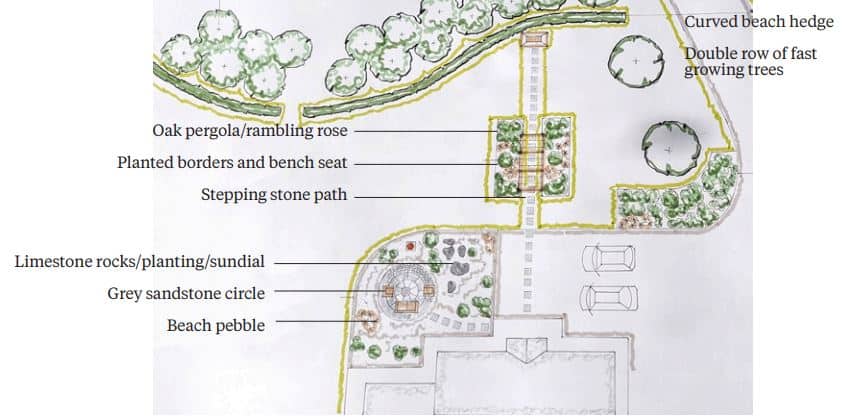
Although the climate, sadly, could never be confused with a Mediterranean one, frost and snow are uncommon and harsh winters few and far between, so once these plants enjoy good drainage, they tend to be very happy.
Planting here includes shrubs euphorbia characias and cistus for structure, with spiky libertia grandiflora and softly waving stipa tenuissima providing contrast.
Aromatic salvias, members of the sage family, adore these conditions and bring brilliant crimson and violet colour all summer, along with the native wild oregano, which grows alongside hedgerows hereabouts.
Top Tips
Keep the rocks. Removing large rocks from the site can be costly, but if you’re keeping them in the garden, plants will soften and greatly enhance their appearance, turning them into a feature rather than something you’re stuck with.
Zone the space. Extensive gardens can be made to feel more inviting by dividing the space into different zones, making each section feel more human in scale.
Think big. Remember to keep planted areas generously sized – most mixed planting is great for wildlife, and if you use the right plants, a large bed or border is as easy to care for as a small one and will make a much greater visual impact.
Grey leaved stachys and artemisia offer interesting, sensory foliage and work very well alongside the grey tones of the limestone.

